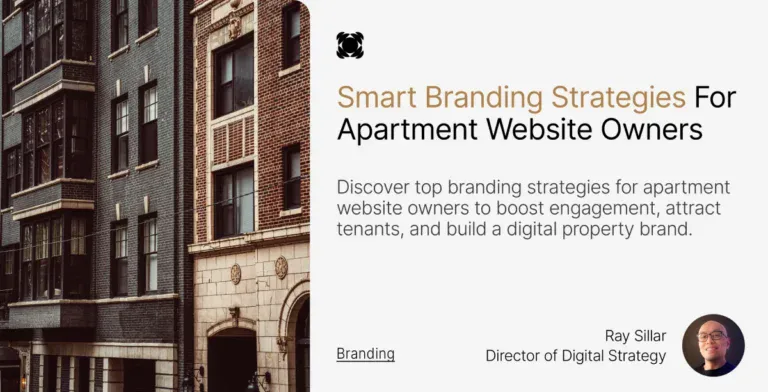Did you know that 86% of companies are already using AI or are planning to integrate it into their digital advertising strategies?
This is a change that is affecting every industry, including real estate, especially when it comes to rentals.

But why are so many landlords still struggling with empty units?
82% of renters use at least three internet listing services during their property search. Yet most website property owners are stuck posting to one or two sites manually, wondering why their units sit vacant for weeks.
Vacancies can quickly become one of your biggest expenses as a landlord. Every empty day means you’re paying mortgage, utilities, and maintenance costs without any rental income coming in. That’s the real cost most landlords don’t calculate until it’s too late.
But this doesn’t mean you have to accept long vacancy periods as part of the rental business.
In fact, there are AI digital tools nowadays that solve some of the biggest issues landlords face this year.
We’ll show you exactly how to create rental listings that work, get them seen on the right websites, price your units using actual market data, make applications simple for tenants, and automate the whole process. Let’s turn those vacant units into money-making assets without the usual headaches.
Trying to improve your property marketing strategies but don’t know where to start? Let us help.
Create Effective Rental Listings Online
Creating rental listings that actually work comes down to understanding what tenants really want to see.
A good listing doesn’t just fill your vacancy, it brings in quality renters who will pay premium rates and stay longer.
Write clear and detailed descriptions
Your headline makes or breaks everything.
We’ve seen thousands of listings, and the ones that get results follow this simple formula: price, bedrooms/bathrooms, property type, neighborhood, and one standout feature.
For example: “$2,000/month, 2 bed/2 bath apartment in Brooklyn with balcony and sea views.”
Skip the boring feature lists. Instead, tell a story about actually living in your property. Start with whatever makes your place special.
Maybe it’s those sea views or a kitchen you just renovated. Use words like “spacious” or “private” that help people picture themselves there.
“Enjoy breathtaking ocean views from your private balcony in this spacious two-bedroom apartment. The recently renovated kitchen features stainless steel appliances and quartz countertops, perfect for entertaining guests.”
Don’t forget the practical stuff: rent amount, security deposit, utilities, pet policy, and how to apply.
End with something that gets them to act, like “schedule your viewing today.”
Use high-resolution photos and virtual tours
Photos can make or break your listing. Listings with professional photos earn 20% more revenue and receive 20% more bookings on average. These days, 71% of renters actually expect virtual tours in property listings.
Here’s how to take photos that sell your property:
- Capture every room, including outdoor spaces and common areas.
- Take photos during daylight hours with all interior lights turned on.
- Shoot from corners to make rooms appear spacious.
- Stage the property with simple touches, like flowers or pillows.
- Clean thoroughly and remove personal items and clutter.
Virtual tours aren’t optional anymore. Properties featuring them receive 49% more inquiries than those without.
You don’t need fancy equipment; most smartphones take great photos and videos now.
If you want something more impressive, platforms like Matterport, Klapty, and Kuula create 3D experiences that let tenants explore your property from anywhere.
Highlight key amenities and location benefits
The right amenities can justify higher rent. But skip the vague stuff like “great outdoor space.”
Be specific: “private, fenced backyard with mature oak trees, perfect for summer barbecues.”
We noticed that 40% of renters view a private outdoor space as highly desirable.
Other features that actually matter to tenants include:
- Washer-dryer connections
- Stainless steel appliances
- Open floor plans
- Storage space
- Pet-friendly policies (important since 72% of renters have pets).
Location sells just as much as the property itself.
Mention specific distances and walking times instead of saying things are “close by.”
If you’re in a good school district or a safe neighborhood, make that clear.
When you put all this together, you’ll create listings that attract qualified applicants faster and potentially command higher rental rates.
Set the Right Rent Price With Market Tools
Getting your rental price wrong costs you money every single day.
If the price is too high, your unit sits empty while you pay the mortgage and maintenance costs.
If the price is too low, then you’re leaving hundreds of dollars on the table month after month.

Most landlords rely too much on guesswork when setting rent prices. The good news is that there are better ways to figure out what tenants will actually pay.
Explore how we increased Gallelli Real Estate’s organic traffic by 46% in our latest case study.
Use rental comps to compare similar properties
Rental comparables (rent comps) show you what tenants currently pay for properties similar to yours in your specific area.
These aren’t theoretical numbers; they’re real rates from actual lease agreements, giving you solid ground to stand on instead of hoping your price is right.
Finding useful rent comps takes a bit of work, but it’s worth doing properly. You want properties within a few hundred square feet of your unit’s size, same bedroom count, and similar amenities.
Location matters the most.
If you’re in an urban area, look within a three-block radius; suburban properties should compare within a couple miles.
Fresh data beats old data every time. Focus on properties rented in the past three to six months. Rental markets shift regularly, so year-old comps might mislead you completely.
When you find good comps, adjust for obvious differences. Maybe your unit has updated appliances or a better view that’s worth an extra $50 per month.
Try tools like Rentometer and Zillow Rent Zestimate
Several platforms now offer rental pricing estimates that can save you hours of manual research.
Rentometer stands out as the most popular option, delivering quick rent estimates for any U.S. property with both average and median rates.
Real estate professionals consistently praise its accuracy.
Zillow’s Rent Zestimate tool takes a different approach, using algorithms that factor in property characteristics, nearby rentals, and public records. The system gives you both a specific estimate and a range showing potential highs and lows.
A property with a $2,600 Rent Zestimate might show a range between $2,000 and $3,200.
That being said, both tools have their limitations. Zillow’s accuracy drops in markets with fewer rental listings; you’ll see wider ranges and bigger margins of error.
Rentometer’s free reports give you basic numbers, but their premium version includes historical trends and deeper market analysis that might justify the cost.
Adjust pricing based on seasonality and demand
Rental markets follow predictable patterns throughout the year. Smart landlords use these cycles to maximize their income instead of fighting against them.
Properties using dynamic pricing strategies can earn more annually compared to landlords who set rates once and forget them.
This approach means watching demand signals to guide your price changes rather than just copying what competitors charge.
Here are the key signals worth tracking:
- Website traffic to your listings: This shows pure demand without any outside influence.
- Local events and seasonal attractions: These create demand spikes that can justify temporary rate increases.
- How fast units lease: Too quick means you’re underpriced; too slow suggests overpricing or marketing problems.
Beyond setting your initial price, keep watching how the market responds. Few inquiries usually mean you’re priced too high for current demand; multiple immediate offers suggest you’ve left money on the table.
Most importantly, don’t just follow competitor pricing blindly. Focus on demand signals specific to your properties instead.
This positions you as someone who leads the market rather than follows it.
Distribute Listings Across Top Rental Websites
Great rental listings mean nothing if tenants cannot find them.
Most prospective tenants don’t limit themselves to a single website.
Research shows 82% of renters use at least three different listing services during their property search. Yet many landlords still post to just one or two sites and wonder why their phones aren’t ringing.
This creates a visibility problem that costs you money every day your unit sits empty.
Syndicate listings using platforms like Avail or Buildium
Rental listing syndication refers to sharing your property listing across multiple rental websites all at once.
Instead of spending hours manually posting to each site (which most landlords hate doing anyway), syndication platforms push your listing out with one submission.
Avail offers one of the most extensive distribution networks, syndicating your listing to 22+ popular rental sites, including Realtor.com, Apartments.com, Redfin, PadMapper, and Zumper. Their step-by-step listing process keeps things simple, which explains why many landlords report getting multiple showings and offers within 12 hours of going live.
For those managing larger portfolios, Buildium provides solid syndication capabilities, distributing listings across Apartments.com, Apartment List, the entire Zillow rental network, Zumper, and even Craigslist.
The platform organizes inquiries and applicants efficiently, making it easier to track responses from all those syndicated websites.
Pro tip: Don’t try to manage responses from 20+ websites manually. That’s a recipe for missed opportunities and frustrated tenants.
Understand the reach of each rental listing website
Different rental platforms attract different types of renters. Zillow Group’s family of sites (Zillow, Trulia, HotPads) delivers massive audience reach, making it essential for minimizing vacancy days across geographically spread properties.
Zumper stands out for its matchmaking algorithm that connects properties with highly compatible renters, potentially delivering higher-quality inquiries rather than just volume.
Apartments.com excels at authenticity, reducing scam risks and building tenant trust through its verification processes.
TurboTenant offers another strong option, syndicating to over 25 rental listing sites, including Apartments.com, Realtor.com, Zumper, and Redfin.
This broader distribution puts your property in front of diverse renter segments, increasing your chances of finding qualified tenants quickly.
The key insight? Each platform has its sweet spot. Some deliver volume; others deliver quality. The best approach uses both.
Track listing performance and optimize visibility
After distributing your listing, monitoring performance becomes crucial for getting the most exposure. Many platforms provide analytics showing how many views, inquiries, and applications your listing generates.
Online platforms like Zillow, Craigslist, and Facebook Marketplace each have different algorithms that determine how they rank and display listings.
Properties with clear writing, strategic keywords, and complete information tend to perform better in search results across these sites.

Consider using the “Promoted Listings” features available on platforms like Avail to gain premium placement across Realtor.com and Zumper networks.
This additional visibility often brings in higher lead generation, justifying the modest investment for properties in competitive markets.
Timing also impacts listing performance significantly; aligning your rental listing with seasonal tenant interest spikes typically seen in spring and summer can drive better results and potentially command higher rates.
The bottom line: If you’re not tracking which sites bring you the best tenants, you’re flying blind.
Good data helps you double down on what works and drop what doesn’t.
Simplify Rental Applications Online
You’ve got your listing up and running across multiple sites.
Now comes the part most landlords dread, dealing with applications.
We’ve seen too many property owners lose great tenants because their application process feels like filing taxes.
The good news?
Online application systems can save you hours of back-and-forth emails while actually attracting better tenants.
Use online forms to collect tenant information
Online rental applications change everything about how you gather applicant information. These digital forms have structured fields.
So, you always get complete information without chasing people for missing details.
Platforms like Buildium let you start with standard application templates that you can customize to match your specific screening needs.
You can easily add, reorder, or create custom sections with a few clicks. You can also include branding elements to make your property management look professional.
The best systems connect directly with your property website, so applicants can apply right from your listings.
TurboTenant applications stand out because they collect everything upfront, which eliminates those annoying follow-up requests that slow down the whole process. Their forms help applicants step by step.
First, they ask for basic contact info.
Then, they move on to employment verification, rental history, and references.
We think the key is to make the process feel simple for tenants while ensuring you get all the information you need.
Enable document uploads and digital signatures
Document handling becomes much easier with modern rental platforms.
RentSpree’s system lets you request specific documents like tax returns and pay stubs from applicants who have already completed their applications. Their platform sends automatic email notifications when tenants upload the requested documents.
The E-Sign Act, passed back in 2000, gives electronic signatures the same legal standing as traditional ink signatures, making digital leasing completely legitimate. This cuts administrative time dramatically.
Many landlords report saving up to 85% on document handling costs through e-signature implementation.
When you’re using e-signature solutions, make sure they meet legal requirements: all parties must agree to electronic signing, signatures need to appear in the right document locations, and the system should keep a digital audit trail tracking who signed, when, and where.
Ensure mobile-friendly application experiences
Today’s renters expect to complete applications on their phones and tablets.
Research shows 88% of renters prefer completing at least some leasing processes online. Mobile-friendly applications let prospective tenants apply from anywhere, which means you’ll get more applications overall.
Platforms like MyRental offer free, mobile-responsive online applications that work smoothly across all devices.
This flexibility removes barriers to application completion and helps you fill vacancies faster.
The most effective mobile application experiences include:
- Responsive design that adjusts to screen size.
- Simple document upload capabilities.
- Touch-friendly signature fields.
- Secure payment processing for application fees.
That being said, not all developers create mobile application systems equally.
Some can be clunky and frustrating for tenants, which defeats the purpose entirely.
The right online application system creates a positive first impression with potential tenants while cutting your administrative work significantly. It’s one of those win-win situations that actually lives up to the hype.
Learn how we increased HPI Real Estate’s website visits by 58% in our recent case study
Automate and Manage the Process Efficiently
You’ve got your listings looking great and your applications flowing in.
Now comes the part that separates successful landlords from those who are drowning in paperwork.
Automation isn’t just about saving time; it’s about creating a rental business that runs without you having to babysit every single step.
Integrate tenant screening tools
Here’s where most landlords make their biggest mistake: they wait until after showing properties to screen applicants.
That’s backward thinking that wastes everyone’s time.
Modern platforms connect directly with major credit bureaus to give you instant reports.
RentRedi puts full credit, criminal, and eviction reports from TransUnion right at your fingertips, even letting you prequalify tenants before showing properties.
We’re talking about hours saved that you used to spend on people who couldn’t qualify anyway.
TurboTenant offers similar capabilities through its toolset that helps landlords handle the entire screening process. Its platform combines online rental applications with built-in screening features, making it easier to fill vacancies with reliable tenants quickly.
If you want deeper verification, RentSpree enables applicants to submit complete verification packages, including income verification through Plaid-certified reports.
Jointly has partnered with TransUnion for seamless tenant screening within its platform, helping you handle lease applications without jumping between systems.
The biggest benefit? You’ll stop wasting weekends showing vacant apartment units to people who can’t actually afford them.
Set up auto-responses and reminders
Nobody wants to play phone tag with dozens of potential tenants. Automated communication keeps everyone in the loop without having to send the same messages over and over.
Automated rent payment reminders cut late payments significantly by sending notifications as due dates approach. You can set these systems to match how your tenants prefer to communicate. Be it email, text, or both.
Property management platforms like Guesty let you create template responses for common questions, which save serious time.
You can set triggers for automatic messages based on specific events in the rental cycle.
Hostfully’s automated messaging goes further by using AI to personalize messages while keeping booking details accurate.
Pro tip: Set up different message templates for different stages of the rental process. First inquiry, application received, screening completed, lease signed—each stage gets its own automated response.
Connect listings to property management software
This is where everything comes together in one smooth operation.
Integration between listing websites and property management software creates a workflow that actually makes sense.
Airbnb lets you connect property management software to manage listings directly from external platforms. Vrbo offers integration that automatically distributes changes across all channels.
These connections eliminate the duplicate data entry that drives most landlords crazy.
Applicant information flows directly from rental applications into your management system. Property managers using connected software see a 6% average year-over-year increase in net booking value.
The best systems bring everything under one roof. Listing management, tenant screening, maintenance tracking, and financial reporting, all in a single cloud-based platform you can access from anywhere.
What we like most: You can track everything from the first inquiry to lease renewal without switching between different tools and spreadsheets.
Fear not if this seems overwhelming at first.
Start with one automation at a time, then add more as you become comfortable with each system.
Get a Custom Property Listing Strategy By Blacksmith
Still wondering if all this digital stuff is worth the hassle?
The numbers speak for themselves. Landlords using these tools consistently fill vacancies faster and earn more per unit than those stuck with paper applications and single-site listings.
But we get it; applying all these strategies and tools to your day-to-day workflow might take a lot of time.
From setting them up to getting used to them, it will definitely take weeks before you see any significant progress. This is time you could use for other aspects of your property business. So now what?
That’s where we come in. Blacksmith is a premium digital marketing company with expert digital marketers ready to implement all the latest rental strategies for your business.
We’ll set up every single important automation and show you how it works so you can understand what it’s doing and why you should care.
We will also ensure that your company only uses the latest and most effective trends for lead generation this year.
Still unsure if investing in a custom listing strategy is what your property business needs?
Don’t worry, click here to schedule a call with us and we’ll provide you with a complete website audit. This way, we can show you all the areas where you could benefit from a custom property listing strategy and what sections of your property website need improvement.









